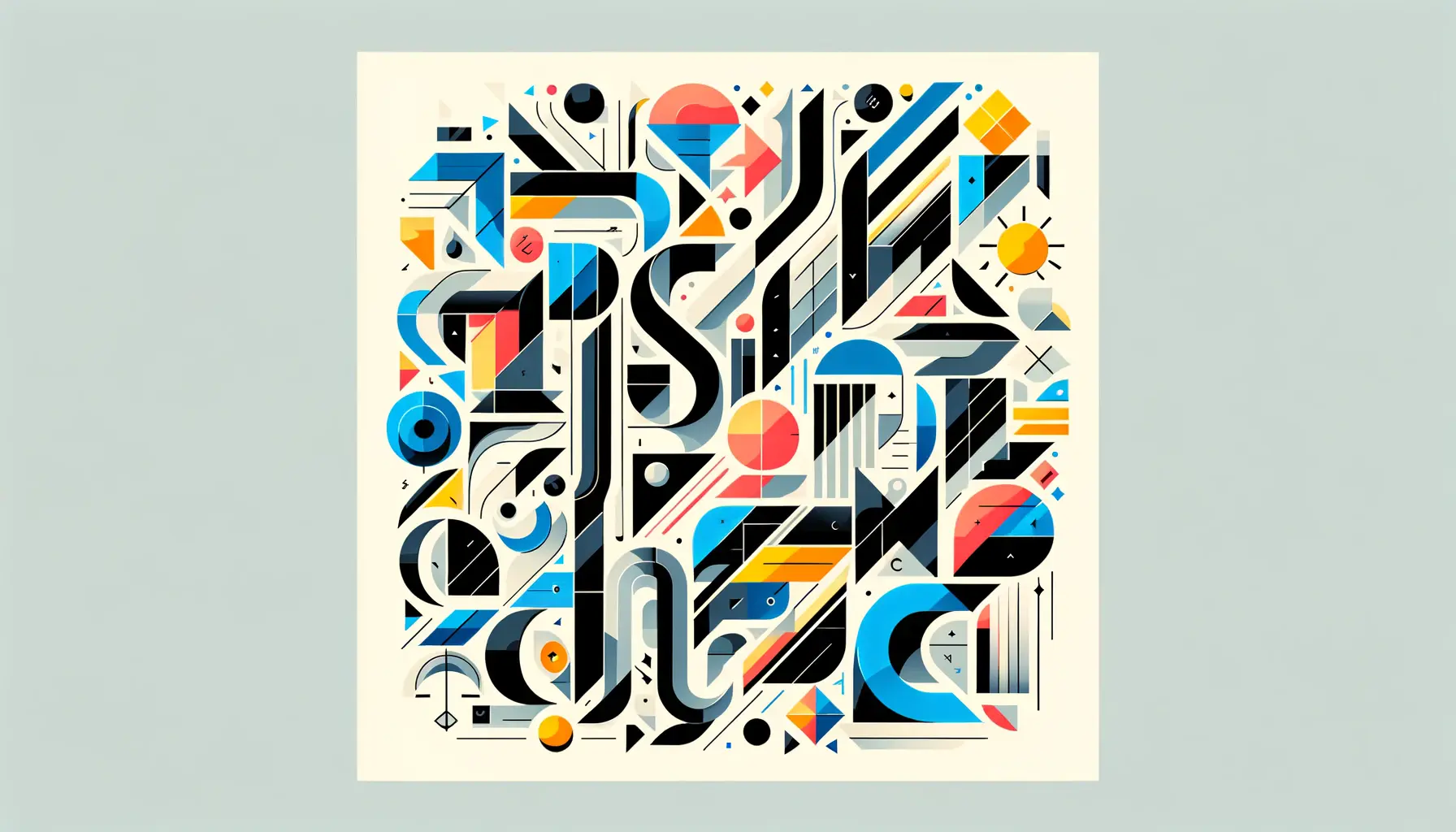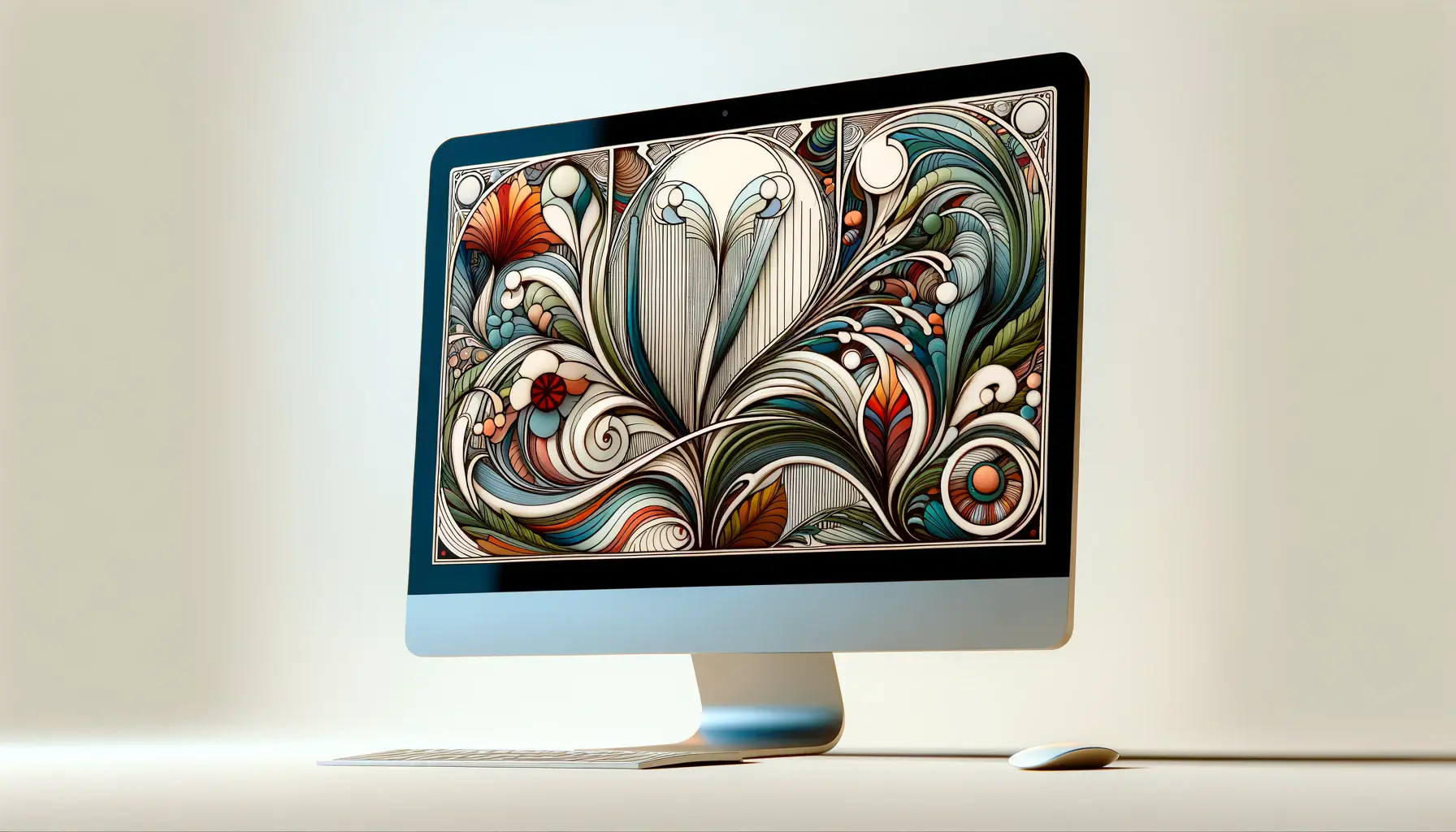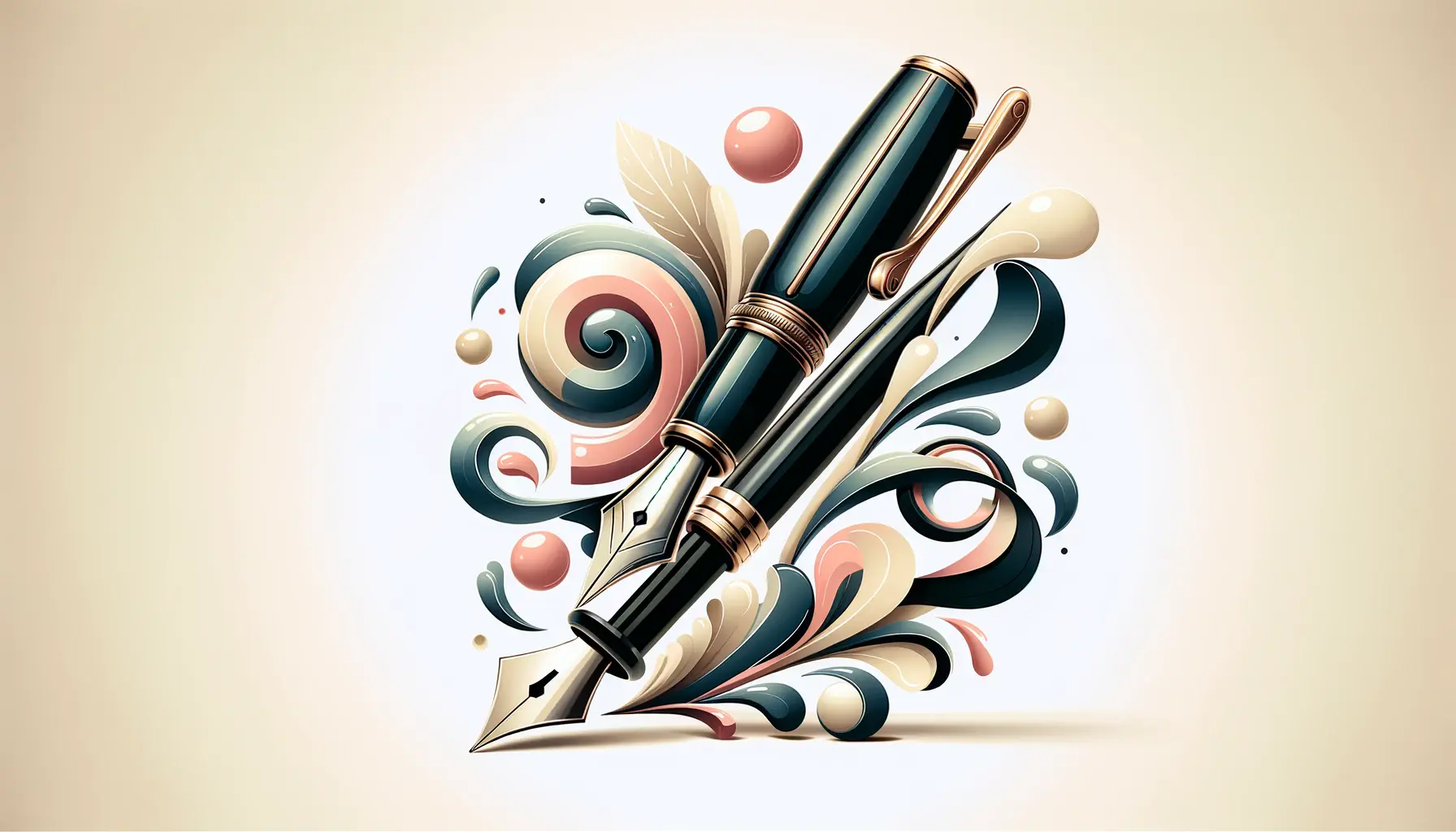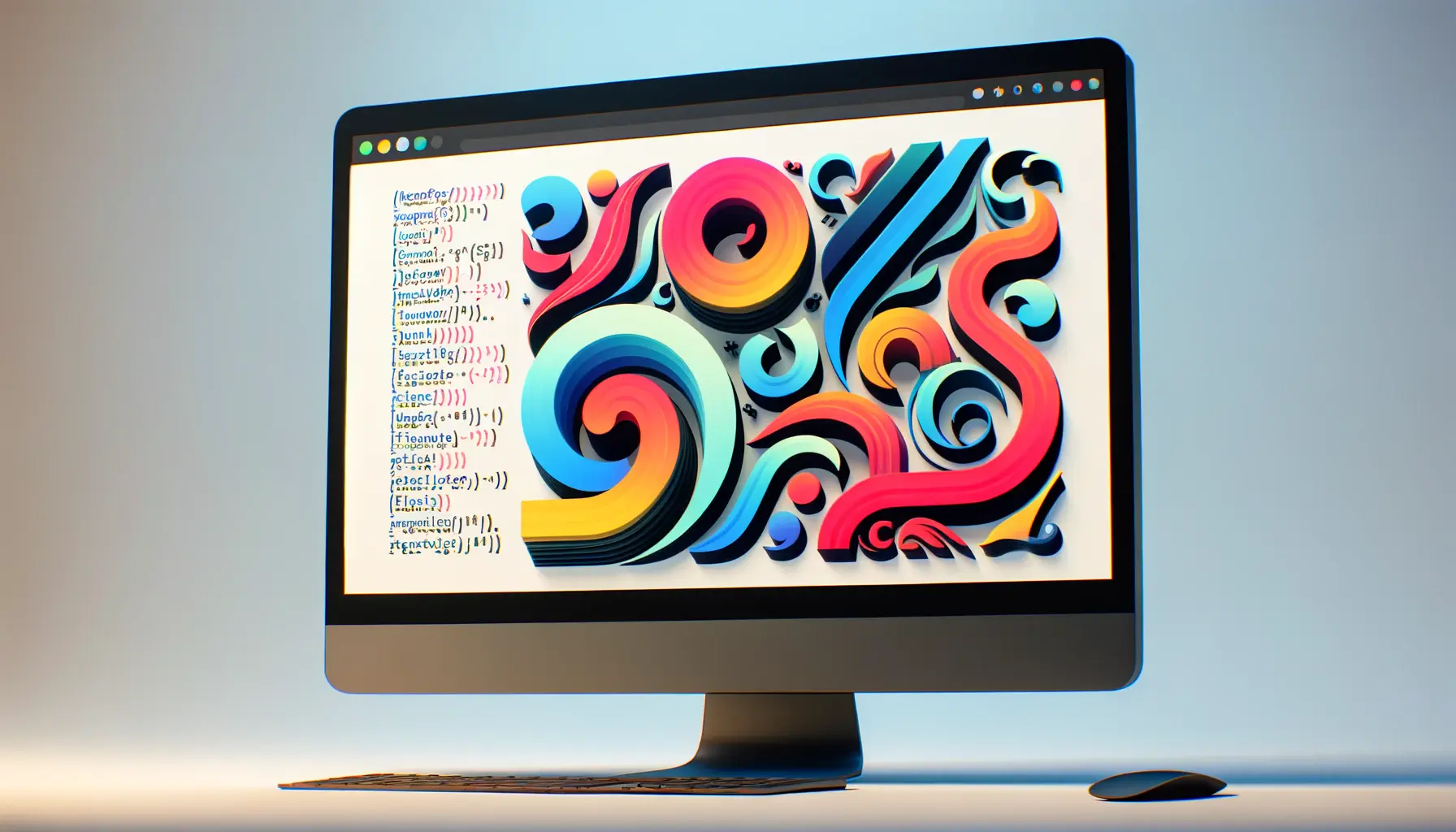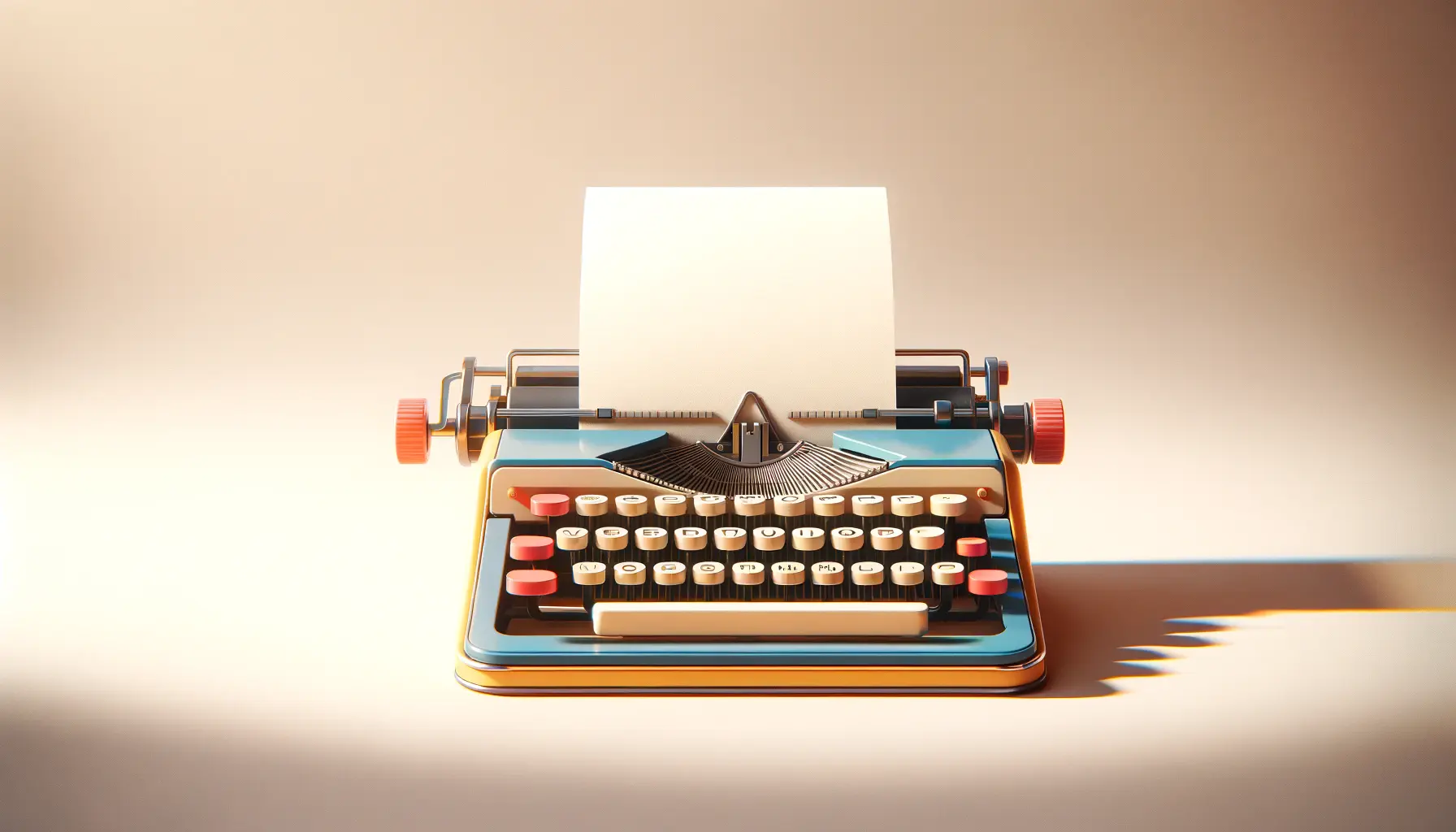Typography, the art of arranging letters and text, is a fundamental aspect of user interface design that often goes unnoticed yet significantly impacts user experience.
It’s not just about choosing attractive fonts; it’s about creating a visual hierarchy that guides users through content effortlessly.
The right typography can enhance readability, mood, and the overall effectiveness of the digital product.
In this exploration, we delve into how typography serves as a bridge between artistic design and scientific application, ensuring that digital interfaces are not only functional but also engaging.
Understanding typography’s role in user interface design requires a blend of aesthetic sensibility and practical application.
It’s a nuanced discipline that combines the beauty of art with the precision of science.
By examining the principles of typography, designers can craft interfaces that communicate more effectively, enhance the user experience, and elevate the design’s overall impact.
This article aims to uncover the layers of typography in UI design, offering insights into its critical importance and practical tips for implementation.
- Understanding Typography in UI Design
- Principles of Effective Typography
- Typography’s Impact on Readability and Accessibility
- Typography in Mobile and Responsive Design
- Typography Trends in UI Design
- Integrating Typography with Other Design Elements
- Best Practices for Typography in UI Design
- Conclusion: The Integral Role of Typography in UI Design
- FAQs: Typography in User Interface Design
Understanding Typography in UI Design
At its core, typography in UI design is about how text looks and feels to the user.
This encompasses a range of elements, from font choice to spacing, alignment, and color.
Each of these factors plays a crucial role in how information is perceived and understood.
Good typography guides the user’s eye, prioritizing content and making the interface intuitive and accessible.
Typography also carries the weight of brand identity and emotional impact.
The fonts and styles chosen can evoke feelings, convey messages, and establish a connection with the user.
This emotional resonance is what transforms a functional interface into an engaging experience.
By carefully selecting and applying typographic elements, designers can create a cohesive, visually appealing UI that reflects the brand’s personality and meets users’ needs.
Font Selection and Brand Identity
Choosing the right font is pivotal in setting the tone of the user interface.
Fonts have personalities; for instance, serif fonts are often seen as traditional and reliable, while sans-serif fonts are viewed as modern and approachable.
The choice of font should align with the brand’s identity and the message it intends to convey.
This decision can significantly affect the user’s perception and emotional response to the product.
Moreover, font selection must consider readability and functionality across different devices and screen sizes.
A font that looks great on a desktop may not perform as well on a mobile device.
Designers must ensure that typography remains legible and effective, regardless of the platform, enhancing the user’s journey through the digital space.
Typography and User Experience
Typography’s influence on user experience extends beyond aesthetic appeal.
It directly impacts usability and accessibility.
Clear, legible fonts and thoughtful layout make content easier to read and understand, reducing cognitive load and improving navigation.
This is especially important in digital environments, where users often skim content to find the information they need quickly.
Effective typography creates a visual hierarchy, highlighting key information and guiding users through the content logically and intuitively.
This not only improves the usability of the interface but also enriches the user’s engagement with the content, making the digital experience more enjoyable and satisfying.
Typography in UI design is not just about aesthetics; it’s a crucial tool for enhancing usability, accessibility, and the overall user experience.
Principles of Effective Typography
Mastering the art and science of typography in user interface design involves understanding and applying key principles.
These principles ensure that typography not only looks appealing but also enhances the functionality and accessibility of the interface.
Let’s delve into some of the foundational rules that guide effective typography in UI design.
Hierarchy and Scale
Establishing a clear hierarchy is essential in guiding users through the content seamlessly.
By varying the size, weight, and color of typographic elements, designers can create a visual order that highlights the importance of different text sections.
This visual hierarchy helps users to quickly grasp the structure of the content and navigate the interface more intuitively.
- Headings and Subheadings: Use distinct styles for headings and subheadings to delineate sections and subtopics.
- Body Text: Ensure the body text is legible and comfortable to read, with appropriate line spacing and font size.
- Call-to-Action (CTA) Buttons: Make CTAs stand out with bold typography or contrasting colors to draw attention.
Contrast and Color
Contrast is a powerful tool in typography that can enhance readability and draw attention to key elements.
Using contrasting colors for text and backgrounds can significantly improve legibility, especially in various lighting conditions or on different devices.
Additionally, color can convey mood and emotion, aligning with the brand’s identity and enhancing the user experience.
- Background vs. Text: Ensure high contrast between text and background colors to facilitate readability.
- Emphasis: Use color to emphasize important words or phrases, aligning with the interface’s overall color scheme.
Spacing and Alignment
Proper spacing and alignment are crucial for creating a clean, organized interface that enhances readability.
Kerning (the space between characters), leading (the space between lines), and tracking (the overall spacing between text) should be adjusted to improve text clarity and aesthetics.
Alignment, whether left, right, centered, or justified, should be chosen based on the layout and content structure, ensuring a balanced and coherent design.
- Kerning: Adjust kerning to avoid awkward spaces between characters, enhancing word recognition.
- Leading: Use appropriate leading to make text blocks more legible and easier on the eyes.
- Alignment: Choose the most suitable alignment for the content and layout, considering readability and design balance.
Effective typography relies on a delicate balance of hierarchy, contrast, and spacing to create interfaces that are both beautiful and functional.
Typography’s Impact on Readability and Accessibility
The choice and arrangement of typography in user interface design have a profound impact on readability and accessibility.
Ensuring that text is easily readable and accessible to all users, including those with disabilities, is not just a matter of good design—it’s a necessity.
Let’s explore how typography influences these critical aspects of UI design.
Enhancing Readability
Readability refers to how easily and quickly users can read and understand text.
Typography plays a key role in this, as the font type, size, color, and spacing all contribute to how text is perceived.
A well-designed typographic layout can significantly reduce eye strain and cognitive load, making the digital experience more pleasant and efficient.
- Font Choice: Select fonts that are clear and easy to read, avoiding overly decorative styles for body text.
- Font Size: Use a font size that is large enough to be read comfortably on various devices and screens.
- Line Length: Keep line lengths to an optimal range to prevent eye fatigue and enhance comprehension.
Accessibility Considerations
Accessibility in typography involves designing text content that can be easily accessed and understood by users with disabilities, such as visual impairments or dyslexia.
This includes considerations like font choice, color contrast, and text alternatives for non-text content.
By prioritizing accessibility, designers can create more inclusive digital environments.
- High Contrast: Ensure high contrast between text and background to aid users with visual impairments.
- Alternative Text: Provide alternative text for images and icons to ensure that all information is accessible to users who rely on screen readers.
- Scalable Text: Design text elements to be scalable without loss of content or functionality, accommodating users who need larger text sizes.
Legibility vs. Readability
While often used interchangeably, legibility and readability are distinct concepts in typography.
Legibility refers to how easily individual characters or glyphs can be distinguished from one another, while readability concerns how blocks of text are arranged and interact to create a coherent whole.
Both are crucial for creating user-friendly interfaces that communicate effectively.
- Legibility: Achieved through clear font choices and adequate character spacing.
- Readability: Enhanced by proper text structuring, including paragraph spacing, alignment, and hierarchy.
Prioritizing readability and accessibility in typography is essential for creating user interfaces that are not only visually appealing but also universally usable.
Typography in Mobile and Responsive Design
As digital experiences increasingly shift towards mobile devices, the importance of typography in mobile and responsive design has never been more critical.
Designers must navigate the challenges of smaller screens and varying resolutions to ensure text is legible, accessible, and engaging across all devices.
This section explores key considerations for implementing effective typography in mobile and responsive environments.
Adapting Typography for Mobile Devices
Mobile devices present unique challenges for typography due to their limited screen size and the variability of display conditions.
Ensuring text remains legible and engaging requires careful consideration of font sizes, line lengths, and spacing.
Responsive typography adapts to the constraints of mobile screens, maintaining readability and providing a seamless user experience.
- Responsive Fonts: Use fonts that are clear and legible at various sizes, adapting to different screen resolutions and orientations.
- Scalable Vector Graphics (SVG): Employ SVG for icons and logos to ensure they scale without losing quality across devices.
- Media Queries: Utilize CSS media queries to adjust typography based on device characteristics, such as screen width and resolution.
Enhancing Usability with Typography
In mobile and responsive design, typography goes beyond aesthetics to directly influence usability.
The right typographic choices can make navigation easier, improve the readability of content, and ensure that interactive elements are easily identifiable.
This enhances the overall user experience, encouraging engagement and reducing frustration on smaller screens.
- Touch Targets: Ensure that links and buttons are of adequate size and spaced apart to prevent accidental taps, with clear typographic labels.
- Content Prioritization: Use typographic hierarchy to prioritize content, making the most important information stand out on small screens.
- Minimalist Design: Adopt a minimalist approach to typography, focusing on simplicity and clarity to enhance mobile usability.
Challenges of Responsive Typography
Creating responsive typography that adapts seamlessly across devices is a complex task.
Designers must balance the need for consistency in brand identity with the practicalities of varying screen sizes and user contexts.
This often involves compromises and adjustments to ensure that typography contributes positively to the user experience, regardless of the device used.
- Consistency vs. Adaptability: Striking the right balance between maintaining brand consistency and adapting to mobile constraints.
- Performance: Ensuring that typographic choices do not negatively impact website or application performance, especially on mobile devices.
- Accessibility: Keeping text accessible and legible for all users, including those with disabilities, across different devices and orientations.
In the era of mobile-first design, typography must be flexible, responsive, and user-centric, adapting to the constraints and opportunities of mobile devices to enhance the digital experience.
Typography Trends in UI Design
The dynamic nature of user interface design keeps typography trends ever-evolving.
Staying abreast of these trends is crucial for designers seeking to create fresh and relevant digital experiences.
While trends should not dictate the core principles of good typography, they can provide inspiration and new directions for engaging user interfaces.
Let’s explore some of the current typography trends in UI design and their implications for digital products.
Custom Fonts and Typefaces
Custom fonts and typefaces have become a popular way for brands to stand out and reinforce their identity.
By designing or commissioning unique fonts, companies can create a distinctive look and feel for their digital products, enhancing brand recognition.
However, it’s important to balance uniqueness with readability and performance to ensure the custom typography serves the user experience.
- Brand Identity: Custom fonts can be a powerful tool for building a strong brand identity across digital platforms.
- Readability: Despite the desire for uniqueness, the primary function of text—to be read—must always be prioritized.
Dynamic Typography
Dynamic typography involves the use of animation and interactive elements to make text more engaging.
This trend can bring a page to life, drawing attention to key messages or guiding users through an interface.
When used judiciously, dynamic typography can enhance the user experience without overwhelming or distracting from the content.
- Engagement: Animated text can capture users’ attention and create memorable interactions.
- Usability: Care must be taken to ensure that animations enhance rather than hinder usability and accessibility.
Minimalist Typography
In contrast to the boldness of dynamic typography, minimalist typography focuses on simplicity and clarity.
This trend emphasizes clean lines, ample white space, and a limited color palette to create a serene and uncluttered user interface.
Minimalist typography can help focus users’ attention on the content and make interfaces more intuitive and easy to navigate.
- Clarity: A minimalist approach to typography prioritizes content clarity and ease of navigation.
- Aesthetic: The use of simple, elegant fonts and layouts can create a visually appealing and modern interface.
Colorful and Creative Typography
Exploring color and creativity in typography is another trend gaining traction.
This involves using vibrant colors, gradients, and creative typographic layouts to inject personality and energy into digital interfaces.
While this trend allows for more expressive designs, it’s essential to maintain legibility and coherence in the typographic palette.
- Personality: Colorful and creative typography can convey a brand’s personality and values.
- Legibility: The use of color and creative layouts must not compromise the text’s legibility and readability.
Typography trends offer a window into the evolving landscape of UI design, providing opportunities to innovate while challenging designers to maintain usability and accessibility.
Integrating Typography with Other Design Elements
Typography does not exist in isolation within user interface design; it interacts with and is influenced by other design elements such as color, space, imagery, and layout.
The integration of typography with these elements is crucial for creating cohesive, engaging, and effective designs.
This section explores how typography can be harmoniously combined with other aspects of design to enhance the overall user experience.
Typography and Color
The interplay between typography and color is a fundamental aspect of design that affects mood, readability, and user engagement.
Color can highlight or subdue textual content, evoke emotions, and signify actions, making it a powerful tool in the designer’s toolkit.
The choice of color for typography should complement the overall design palette and serve the intended communication purpose.
- Contrast: Ensure sufficient contrast between text and background colors to improve readability.
- Emphasis: Use color to emphasize or differentiate specific pieces of text, such as headings or keywords.
Typography and Imagery
Combining typography with imagery can create compelling narratives and visual interest in a design.
The relationship between text and images should be carefully considered to ensure that each enhances the other without causing confusion or clutter.
Typography can be layered over images to convey key messages or integrated within visuals to create dynamic compositions.
- Overlay Techniques: Apply text overlays on images with careful attention to contrast and legibility.
- Text Wrapping: Use text wrapping around images to create a fluid, integrated design that guides the reader’s eye.
Typography and Layout
The layout of a user interface organizes information in a way that is accessible and appealing to users.
Typography plays a critical role in this organization, helping to create hierarchy, direct attention, and segment content into digestible pieces.
The spatial relationship between typographic elements and the overall layout affects the flow and readability of information.
- Grid Systems: Utilize grid systems to align typographic elements and create a balanced, cohesive layout.
- Whitespace: Leverage whitespace around text to enhance readability and focus attention on content.
Typography and Interaction
Typography also intersects with interaction design, influencing how users engage with digital interfaces.
Textual elements like buttons, links, and calls to action are not just visual design components but functional tools that facilitate user interaction.
The design of these elements must consider both aesthetic appeal and usability, ensuring that users can easily navigate and interact with the interface.
- Clickable Elements: Design text-based interactive elements to be clearly recognizable and easy to use.
- Feedback: Use typographic changes (e.g., color, size) to provide feedback on user interactions, such as hover or click effects.
Effective integration of typography with other design elements is key to creating user interfaces that are not only visually appealing but also functionally seamless and intuitive.
Best Practices for Typography in UI Design
Implementing typography in user interface design effectively requires adherence to best practices that balance aesthetics, readability, and functionality.
These practices ensure that typography not only contributes to the visual appeal of a design but also enhances the user experience.
Here, we outline essential best practices for typography in UI design, providing a guide for creating more engaging and user-friendly interfaces.
Consistency Across Platforms
Maintaining typographic consistency across different platforms and devices is crucial for a cohesive user experience.
This consistency helps users navigate and understand your interface more easily, regardless of the device they are using.
Employ a consistent set of typefaces, styles, and sizes across your digital products to reinforce brand identity and improve usability.
- Style Guides: Develop comprehensive style guides that detail typographic standards for all digital platforms.
- Responsive Design: Ensure typography adapts effectively to different screen sizes and orientations without losing consistency.
Accessibility and Inclusivity
Designing with accessibility in mind is a non-negotiable aspect of modern UI design.
Typography should be accessible to all users, including those with visual impairments or reading disabilities.
This includes selecting legible fonts, ensuring sufficient contrast, and providing alternative text where necessary.
By prioritizing accessibility, designers create more inclusive digital environments.
- Contrast Ratios: Adhere to WCAG guidelines for text contrast to ensure legibility for users with visual impairments.
- Font Choices: Choose fonts that are easy to read and support different weights and styles for better hierarchy and emphasis.
Optimizing for Readability
Optimizing typography for readability is essential to keep users engaged and reduce strain.
This involves careful selection of font sizes, line lengths, and spacing to ensure that text is easy on the eyes.
Readability affects how quickly users can absorb and understand information, impacting their overall experience with your interface.
- Line Length: Keep line lengths to an optimal range (50-60 characters per line) to enhance readability.
- Spacing: Use adequate spacing between lines (leading) and paragraphs to break up text and improve legibility.
Embracing Hierarchy and Scale
Effective use of hierarchy and scale helps organize information and guide users through your content.
By differentiating text elements through size, weight, and color, you can create a clear visual hierarchy that delineates headings, subheadings, body text, and calls to action.
This organizational structure is key to a user-friendly interface that communicates effectively.
- Visual Hierarchy: Use typographic scale to establish a clear order of importance among text elements.
- Functional Hierarchy: Ensure that the most important information stands out and is easily navigable.
Testing and Iteration
Typography in UI design is not a set-and-forget element; it requires continuous testing and iteration to perfect.
Conduct user testing to gather feedback on typography’s impact on readability, usability, and overall experience.
Use this feedback to iterate and refine your typographic choices, ensuring they meet user needs and enhance the interface.
- User Feedback: Collect and analyze user feedback on typography and adjust designs accordingly.
- A/B Testing: Conduct A/B tests to compare different typographic treatments and identify the most effective options.
Adhering to best practices in typography is essential for creating user interfaces that are not only visually appealing but also highly functional and accessible to all users.
Conclusion: The Integral Role of Typography in UI Design
The exploration of typography in user interface design reveals its profound impact on the usability, accessibility, and aesthetic appeal of digital products.
As we’ve navigated through the principles, trends, and best practices of typography, it’s clear that this art and science is much more than just selecting beautiful fonts; it’s about crafting an engaging and intuitive user experience.
Typography in UI design serves as the backbone of digital communication, guiding users through a seamless interaction with technology.
The Future of Typography in Digital Interfaces
As digital landscapes evolve, so too will the approaches to typography in UI design.
The future promises further integration of technology and typography, with advancements in responsive design, accessibility, and custom typefaces shaping the way we interact with digital content.
The challenge for designers will be to balance innovation with usability, ensuring that typographic choices continue to communicate effectively and enhance the user experience.
Embracing Typography as a Design Priority
To harness the full potential of typography in UI design, it’s essential for designers to consider typography not as an afterthought but as a fundamental aspect of the design process.
This involves continuous learning, experimentation, and adaptation to new trends and technologies.
By prioritizing typography, designers can create more meaningful and accessible digital experiences that resonate with users on a deeper level.
- Typography shapes the way users perceive and interact with digital content, influencing readability, mood, and brand identity.
- Adhering to best practices in typography enhances the accessibility and usability of digital products, making them more inclusive and user-friendly.
- The future of typography in UI design is bright, with ongoing innovations promising to enrich user experiences in exciting and dynamic ways.
In conclusion, the art and science of typography in user interface design are indispensable for creating compelling digital experiences.
As we look forward, the role of typography will undoubtedly continue to evolve, but its importance in connecting users with technology in an accessible and aesthetically pleasing manner will remain paramount.
By embracing typography as a critical element of design, we can create digital interfaces that are not only functional but truly resonate with users around the globe.
Quality web design is key for a great website! Check out our service page to partner with an expert web design agency.
FAQs: Typography in User Interface Design
Explore common questions about the role and impact of typography in UI design, offering insights for designers and enthusiasts alike.
Typography in UI design involves selecting and arranging typefaces to enhance readability, usability, and aesthetic appeal in digital interfaces.
Typography significantly impacts user experience by improving readability, setting the tone, and reinforcing brand identity in digital products.
Proper typography ensures text is legible and easy to digest, reducing eye strain and enhancing overall user engagement with the content.
Yes, thoughtful typography choices can make UIs more accessible by accommodating users with visual impairments or reading difficulties.
Current trends include custom fonts, dynamic typography, minimalist designs, and the integration of color and creativity in typefaces.
Select fonts that align with the brand’s identity, ensure readability across devices, and contribute to a cohesive user experience.
Typography in mobile UI design is crucial for ensuring content is legible and engaging on smaller screens, enhancing usability and accessibility.
Conduct user testing to gather feedback on typography’s readability, aesthetic appeal, and its impact on the overall user experience.


